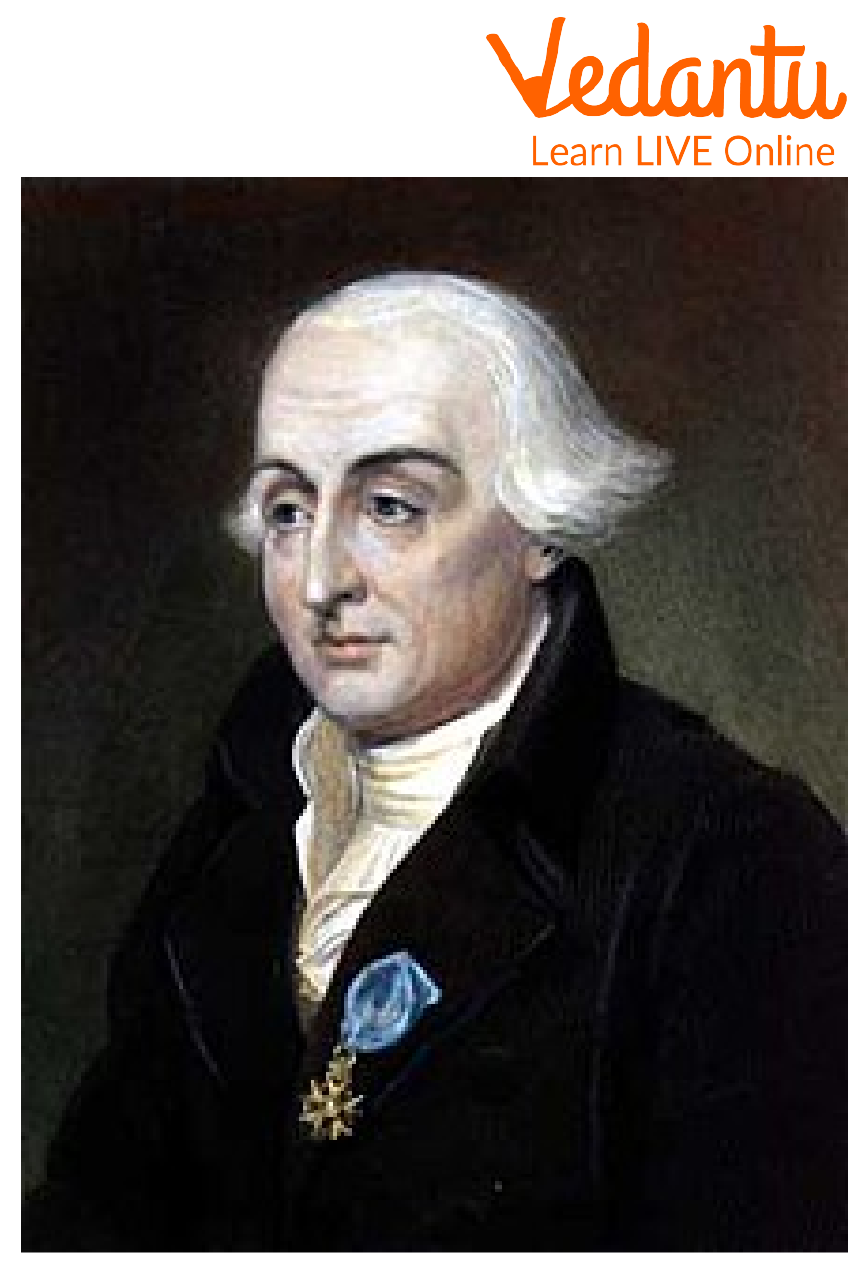




An Introduction to Lagrange's Four-Square Theorem
According to Lagrange's four-square theorem, also referred to as Lagrange's theorem, every positive integer can be expressed as the sum of squares of four non-negative numbers. Thus, the squares constitute an order of four additive bases. Fermat used infinite descent to demonstrate the theorem, but the proof was disregarded. The theorem could not be validated by Euler. Lagrange provided the initially published proof. Lagrange's Four-Square Theorem will be covered in this session.
History of the Joseph-Louis Lagrange
Joseph-Louis Lagrange, sometimes known as Giuseppe Luigi Lagrange or Lagrangian, was a mathematician and astronomer from Italy who eventually acquired French citizenship. Analysis, number theory, and both classical and celestial mechanics all benefited from his substantial contributions. In 1770, he released the original proof of the four-square theorem.

Joseph-Louis Lagrange
Lagrange's Theorem Statement
According to Lagrange's four-square theorem, commonly known as Bachet's conjecture, every natural number can be written as the sum of four integer squares. In other words, the squares create a four-order additive basis.
Lagrange's Theorem Formula
According to the Lagrange theorem,
where the four numbers
Lagrange Theorem Proof
The Classical Proof:
Every odd prime integer p can be used to prove the theorem. This naturally results from Euler's identity of a four-square (and from the fact that the theorem is true for the numbers 1 and 2).
Every a between 0 and
The
Let m be the smallest positive integer that has the property that mp is the sum of the four squares
In order to achieve this, we take into account the
Euler's four-square identity is then used once more to demonstrate that
For
Both the situation
Applications of Lagrange's Four-Square Theorem
Lagrange's Four-Square Theorem gives a formula for the number of ways that a given natural number n can be represented as the sum of four squares. The theorem can be applied to every natural number. Like even for big numbers like one lakh or one crore.
Lagrange's Four-Square Theorem Examples
1. Express the number 23 as a sum of four squares using Lagrange's four-square theorem.
Ans: By Lagrange's four-square theorem,
That means
And if we consider
Then,
This is true.
So, 23 can be expressed as
2. How will you write 2012 as a sum of four squares using Lagrange's four-square theorem?
Ans: By Lagrange's four-square theorem,
That means
And if we consider,
Then,
This is true.
So, 2012 can be expressed as
3. Show that 7839 can be written as the sum of four squares.
Ans: Using Lagrange's four-square theorem, we can say that 7839 can be written as sums of four squares.
Using Lagrange's four-square theorem,
That means
Consider
Then,
This is true.
So, 7839 can be expressed as
Important Points to Remember
Any positive integer can be represented as the sum of the squares of four positive numbers.
The Lagrange's Four-Square theorem is applicable to every single natural number.
Important Formula from the Theorem
Any natural number p can be expressed as
where the four numbers
Conclusion
In this article, we went over Lagrange's four-square theorem and its proof in great depth. It is evident from the previous discussion of Lagrange's four-square theorem that Lagrange's four-square theorem provides us with a way to write every natural number in the form of four squares.
FAQs on Lagrange's Four-Square Theorem
1. What are natural numbers?
Natural numbers are utilised for counting as well as being a part of the number system that consists of all positive integers from 1 to infinity. It does not contain zero (0). In actuality, the numerals 1, 2, 3, 5, 6, 7, 8, 9,...
Natural numbers are a subset of real numbers, which only comprise positive integers such as 1, 2, 3, 4, 5, and 6 and exclude any other values such as zero, fractions, decimals, and negative numbers. These numbers can be counted and are frequently used for mathematical purposes. "N" stands for the collection of natural numbers.
2. How Euler’s four-square identity is related to Lagrange’s four-square theorem?
By reducing the problem to the case of prime numbers, the main theorem's proof is established. Lagrange's four-square theorem is implied by Euler's four-square identity, which states that if it holds for two integers, it also holds for the sum of the two numbers. For
3. What is the four square theorem's history?
The Greek mathematician Diophantus of Alexandria initially proposed the four-square theorem in his work Arithmetica (3rd century CE). The French amateur mathematician Pierre de Fermat, who lived in the 17th century, is credited with creating the first proof. The last theorem of Fermat was the result of his study of Diophantus, even though he did not publish this proof. The Italian mathematician Joseph-Louis Lagrange, after whom the theory is currently named, published the first proof of the four-square theorem in 1770.




































